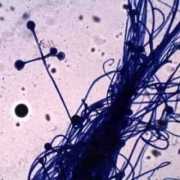12 Signs and Symptoms That You Have an Overgrowth of Candida albicans
Most women go through months or even years of living with telltale Candida symptoms. This Candida overgrowth is basically a yeast issue exploding internally, and it can cause a slew of symptoms to develop. Millions of women live with this condition without any knowledge of it. Men can also have it, even though it is more commonly known in females.
1. Sugar Cravings
Those early morning doughnuts and sugary coffees may be delicious, but they may also be seriously hurting you internally. Candida feeds off sugar, making the symptoms worsen each day for the patient. Think of the current obesity epidemic going on across the globe, and that some 70% of people are living with Candida challenges. Very few people living today are not addicted to sugar. The sooner you cut down your sugar intake, the quicker you will start to see your body showing appreciation and your yeast overgrowth symptoms will subside in most cases.
2. Autoimmune Complications
There are tons of autoimmune challenges that can be brought on simply by an allergy to yeast. Conditions such as Multiple Sclerosis, celiac disease, or arthritis can all be worsened or caused by yeast interactions. Researchers have proven time and again that candida has a protein inside which the body reacts to very similarly to how it reacts to gluten. Chronic fatigue syndrome and fibromyalgia for instance have both been diagnosed as side effects of candida overgrowth.
The Lancet (an authoritative voice in global medicine, with 1.8 million registered users worldwide) showed candida contains a protein called HWP-1, which is similar in its structure to gluten.
3. Nail Fungus
Signs of nail fungus are almost always as a result of candida overgrowth. Athlete’s foot infection, or ringworm are also signs of a yeast problem brewing inside. You can start trying to treat it with over the counter products, but ultimately if the condition persists, you need a candida overhaul with your diet to rehab it.
4. Allergies
Candida can wreck great havoc on your allergies. Seasonal ones and food allergies can be irritated by candida. It can also be the direct source of them in the first place. One way to find out is by working closely with an allergist, and setting up testing that is the most invasive way to find out what you may be allergic to and then eliminate it from your diet.
5. Urinary Tract Infections
Millions of people experience those telltale signs of UTI’s such as frequent urination, burning when urinating, or the feeling that you need to go but upon trying, you can’t at all. It can be awful for days until it subsides. It is without question a symptom of candida taking over your body. Try to decrease the symptoms of the UTI by taking over the counter products, before reaching for antibiotics as often those prescription medications can be the direct source of how your candida issue got this far in the first place.
6. Digestive Issues
It’s not sudden news flash that people just aren’t eating as well as they should be anymore. Decades ago dinner was meats, potatoes, and vegetables and less people were getting sick in their gut as a result of it. Over the past few decades more are consuming sodas, candies, and fast food that is loaded with properties that are not healthy and fattening. The gut starts to become annoyed, the candida grows in the gut lining, then the patient ends up with a series of digestive troubles.
7. Fatigue
When you are getting a full night’s sleep as usual and your body just isn’t easily making it through the day, you have to start looking into the possibility of candida possibly being the culprit. It tends to make you tired, or feel exhausted on a regular basis, not just after you may have exerted yourself. Speak with your doctor about candida testing to determine if you are living with a yeast allergy or overgrowth.
8. Mood Swings
Women take enough of a hit with menstrual cycles causing emotional high sand lows, but to add to that they could also be suffering from a yeast problem that’s causing sadness or irritability in addition, just seems like a lot to deal with. First steps should be to possibly create a journal that depicts when you are feeling these highs and lows, and what the circumstances of the day were at that particular time. Where you dealing with something out of the ordinary, or just random mood challenges were coming into play with no explanation? If you suffer from these mood highs and lows on a regular basis according to your journal entries, then take it with you to see a medical practitioner to identify if yeast is the cause.
9. ADHD
ADHD, brain fog, and concentration medications have been prescribed in almost excessive amounts over the past decade. Many women specifically feel that they don’t even have a mental concentration issue brewing, but that they have no other understanding for why they cannot seem to focus as they once could. Speak to your doctor about the possibility of having an interaction with yeast overgrowth as a reason for your attention or focus problems.
10. Rashes or Skin Disorders
Eczema for instance, can be a huge indication of candida overgrowth in humans. Rashes that may develop, itchy or dry skin, hives and so on can all be as a side effect of yeast growing at a rapid pace internally and your body trying to fight it off. Sometime prescription steroids can quickly cure a bout of eczema, but if it keeps returning or if you develop other skin issues, it is definitely worth having your candida levels tested either by way of an at home test, or one that you perform with your medical team.
11. Thrush
Oral thrush happens when a yeast infection develops inside your mouth. It’s also known as oral candidiasis, oropharyngeal candidiasis, or simply thrush. Oral thrushmost often occurs in infants and toddlers. It causes white or yellowish bumps to form on the inner cheeks and tongue.
12. Vaginitis
Candida species can be present in healthy women in the vagina without causing any symptoms. In fact, it is estimated that 20% to 50% of women have Candida already present in the vagina. For an infection to occur, the normal balance of yeast and bacteria is disturbed, allowing overgrowth of the yeast. While yeast can be spread by sexual contact, vaginal yeast infection is not considered to be a sexually-transmitted disease because it can also occur in women who are not sexually active, due to the fact that yeast can be present in the vagina of healthy women.
Vaginal yeast infections are very common, affecting up to 75% of women at some point in life.
Treating Candida
Candida overgrowth can be tested at your doctor’s office through stool samples, blood work, or even an at home test that you can purchase at any local drug store. If you have determined that do have a candida overgrowth, the easiest step in curing the condition is to change your diet.
- Sugar for example feeds the candida, and if you have a low sugar or sugar free diet it will start to show signs of subsiding the issue.
- Probiotics are another way to get help immediately for your symptoms.
- Drink lots of water
- Work closely with your physician to get your symptoms under control as once you have infections all over the body you may have to administer a serious dose of antibiotics to get everything back to normal.
Natural Solutions for Candida
The best way to treat candidiasis and prevent recurring infections is to address the underlying cause. The following foods have been shown to help fight Candida infections:
Garlic: Garlic contains an antifungal substance called allicin, which has been shown to act against Candida yeasts in animal and test-tube studies.
Coconut oil: Coconut oil is high in lauric acid, which has been shown to fight Candida infections in multiple test-tube studies.
Curcumin: Test-tube studies indicate that curcumin may kill Candida yeasts, or at least reduce their growth.
Xylitol: In one test-tube study, xylitol helped fight Candida, decreasing its ability to stick to a surface and cause infection.
Aloe vera: Aloe vera gel may inhibit the growth of Candida in the mouth and prevent infections (34Trusted Source).
Pomegranate: A test-tube study indicated that the plant compounds in pomegranate are beneficial against Candida yeasts.
Kombucha: Kombucha tea is rich in tea polyphenols and acetic acid, both of which have been shown to kill Candida in test-tube studies.
Probiotics: Probiotics like Lactobacillus may reduce Candida growth and protect against infections.
Unfortunately, dietary changes may not always do the trick, in which case antifungal drugs are the most common form of treatment. If you require medication, speak to your healthcare provider.
Candida is typically not life-threatening, but if left untreated, it can spread and eventually reach the bloodstream.
Once the fungus is circulating throughout the body, it can affect vital organs like the brain and heart and cause more serious complications, including death.








